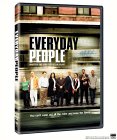| Reviews & Columns |
|
Reviews DVD TV on DVD Blu-ray 4K UHD International DVDs In Theaters Reviews by Studio Video Games Features Collector Series DVDs Easter Egg Database Interviews DVD Talk Radio Feature Articles Columns Anime Talk DVD Savant Horror DVDs The M.O.D. Squad Art House HD Talk Silent DVD
|
DVD Talk Forum |
|
|
| Resources |
|
DVD Price Search Customer Service #'s RCE Info Links |
|
Columns
|
|
|
Everyday People
Cutting out the heart of a Brooklyn neighborhood
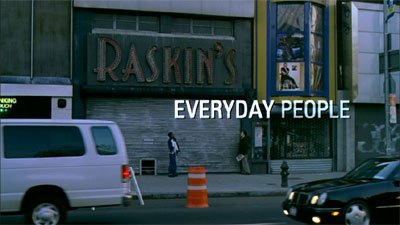
The Movie
When I was a kid, there was a mall near my house that my grandmother would take me to each weekend to shop and have lunch. There was a bridge between the main mall and a big store across the street that we would always go to, and I loved going over that bridge (why, I don't know.) The mall certainly wasn't an institution...in fact, I wondered how it would even stay in business most days, with some crappy stores, several of which were empty anyway. The only reason the place really meant anything to me is because I was there with my grandmother. Today, it's gone, the bridge torn down. It makes me sad when I think about it, even if I knew it would someday be gone. It's kind of weird that a place that existed to make money off of people can make people sad.
The loss of a business that means something to people is central to the one-day tale of Everyday People, as a Brooklyn institution, Raskin's, faces closure as a real estate company attempts to buy the restaurant out and turn the area into a condo complex. Ira, the owner, and son of the previous owner, is struggling with the decision to take the money and put the people who worked for him and his father out on the streets as well as destroying the neighborhood (a reality that is likely whether he sells or not.) The workers have their own particular struggles, be it trying to raise a child on their own, facing unemployment or dealing with their internal demons.
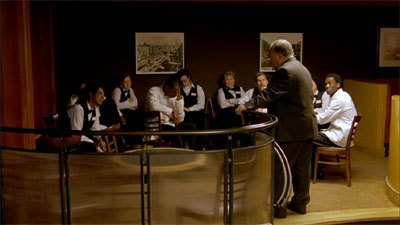
The restaurant may be central to the movie, but to say the movie is the story of the restaurant would be wrong. The story being told is that of the people touched by the restaurant. Director Jim McKay, who knows how to make the less glamorous parts of New York look good, does a tremendous job of drawing the viewer into these people's lives, in particular the lives of Joleen, a single mother looking to make ends meet, and Samel, a young man heading to college, but not before making contact with his absentee father. By having a cast of mostly unknowns (with the exception of Reg E. Cathey as the film's racial conscience), there's no expectations or biases that prevent these characters from being anything but these characters. Thus, as the racial, religious and social undertones of the film come to the fore, there's nothing causing the actions and words from being seen as "acting." It's simply too real.
Everyday People becomes so involving as it progresses, that when the credits come up, it's a shock. That's because there's no ending to the film. Or more accurately, there's no end to the story. The movie ends abruptly, with every person at a crossroads. Not knowing what happened to them can be very annoying to most moviegoers, but for this film it makes sense. In real life, there's no ending to any person's story until the very end.
The DVD
Everyday People is presented on one DVD, which comes packaged in a standard keepcase, with a one-sided insert that lists the chapter stops. The poster-themed anamorphic widescreen menus are static, with options including play, chapters, special features and languages. The scene selection menus have still photo previews, while the language options available are audio tracks in English 5.1 and 2.0, and French and Spanish 2.0, and English, French and Spanish subtitles.
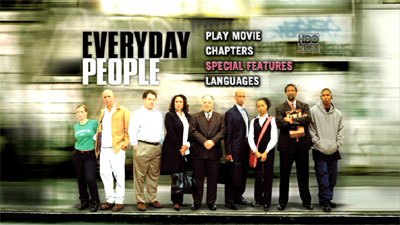
The Quality
Presented in 16:9 anamorphic widescreen, this film looks terrific, with dead-on color, tremendous detail and nice clarity. There are shots that are simply alive with color. The color palette sticks mostly to earth tones, which is an interesting choice for a film set in Brooklyn. The audio, presented in several options, is not a showcase track, but presents the film's dialogue and soundtrack truthfully. There's barely any surround activity, and the movie really doesn't provide a reason for having it.
The Extras
There are just two extras on this disc, a feature-length commentary and a short featurette on the film's production. The commentary features the film's writer and director Jim McKay, and the movie's executive producer Nelson George. The commentary is extremely informative, thanks in large part to the nature of McKay's process, which involved workshopping a script with improvisation, in order to arrive at the final script. Thus, there was a lot of plot that ended up scrapped or changed, giving McKay and George plenty to talk about. Much of the commentary is spent talking about the casting, and why scenes are shot the way they are. For any aspiring director, it's a good listen, as the two talk about, among other things, the effect of Pootie Tang on their film.
"The Process" runs just over three minutes, covering production of the film. A full-screen presentation, it features plenty of behind-the-scenes footage, mixed with interview and film clips, presented in letterboxed widescreen. Mainly it focuses on the improv process and how the stories in the movies were created. It's definitely interesting, but far too brief.
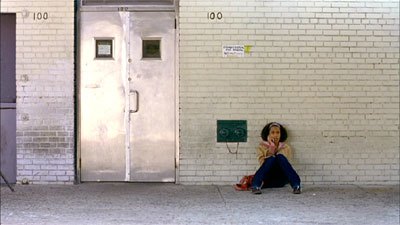
The Bottom Line
If you don't mind finishing a film with a bunch of loose ends, this is an excellent day-in-the-life film that deals with themes like race, family, religion, responsibility and tradition. The performances are all impressive and McKay did a great job of making this movie look good. Heading into this movie, I didn't have very high hopes, but what I ended up with was an entertaining 90 minutes of thought-provoking film. If you like independent films or character studies, this is an interesting flick.
Francis Rizzo III is a native Long Islander, where he works in academia. In his spare time, he enjoys watching hockey, writing and spending time with his wife, daughter and puppy.Follow him on Twitter
*The Reviewer's Bias section is an attempt to help readers use the review to its best effect. By knowing where the reviewer's biases lie on the film's subject matter, one can read the review with the right mindset.
|
| Popular Reviews |
| Sponsored Links |
|
|
| Sponsored Links |
|
|
| Release List | Reviews | Shop | Newsletter | Forum | DVD Giveaways | Blu-Ray | Advertise |
|
Copyright 2024 DVDTalk.com All Rights Reserved. Legal Info, Privacy Policy, Terms of Use,
Manage Preferences,
Your Privacy Choices | |||||||









